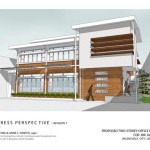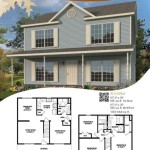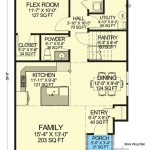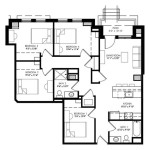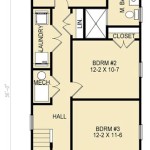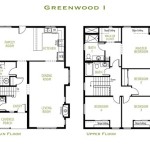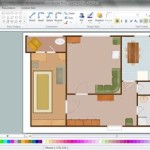```html
Florida One Story House Plans: A Comprehensive Guide
Florida, with its sunny climate, expansive landscapes, and distinct architectural preferences, is a prime location for single-story home construction. One-story house plans offer a number of advantages, appealing to a diverse range of homeowners, from families with young children to retirees seeking accessibility and ease of maintenance. This article provides a detailed overview of Florida one-story house plans, exploring their benefits, design considerations, popular styles, and key factors to consider when selecting the ideal plan.
The popularity of one-story homes in Florida can be attributed to several factors. Firstly, the relatively flat terrain across much of the state makes single-story construction both practical and cost-effective. There is less need for extensive foundation work to accommodate uneven ground, a common concern in areas with hilly or mountainous topography. Secondly, the absence of stairs makes one-story homes inherently more accessible for individuals with mobility limitations, as well as for families with young children. Finally, the single-level design often fosters a more cohesive and connected living environment, promoting interaction and convenience within the household.
Before delving into specific design styles, it is crucial to understand the core benefits of opting for a one-story house plan. These advantages extend beyond mere aesthetic appeal and encompass practical considerations related to cost, maintenance, and lifestyle.
Accessibility and Universal Design
Accessibility is a paramount consideration for many homeowners, particularly those planning for long-term residence. One-story homes inherently eliminate the challenges associated with stairs, making them ideal for individuals with disabilities, mobility impairments, or those simply planning for aging in place. This design feature not only enhances safety but also allows for greater independence and freedom of movement throughout the home. Universal design principles can be further incorporated into the plan, including wider doorways, roll-in showers, and adjustable countertops, to create a truly accessible and inclusive living environment.
Furthermore, the absence of stairs reduces the risk of falls, a significant concern for older adults. This single-level design can provide peace of mind and a safer living environment for individuals of all ages and abilities. The long-term benefits of accessibility cannot be overstated, as they contribute to a more comfortable and convenient lifestyle for years to come.
Cost-Effectiveness in Construction and Maintenance
While the initial cost of a one-story home may vary depending on the square footage and materials used, the overall construction process is often more cost-effective compared to multi-story dwellings. The simpler structural design typically translates to lower labor costs and reduced material requirements. The foundation, for example, is less complex and requires less excavation, contributing to significant savings. The ease of access also facilitates faster construction timelines, further reducing labor expenses.
The long-term maintenance costs associated with one-story homes are also generally lower. Roofing repairs, painting, and gutter cleaning are all more easily accessible and can be completed without the need for specialized equipment or scaffolding. Similarly, exterior maintenance tasks, such as window cleaning and siding repairs, are simplified by the single-level design. This translates to lower maintenance bills and a reduced workload for homeowners.
Energy efficiency can also contribute to long-term cost savings. In a one-story home, heating and cooling systems generally require less energy to maintain a consistent temperature throughout the living space. The reduced vertical space minimizes the potential for temperature stratification, where warm air rises and leaves the lower levels cooler. This can result in lower energy bills and a more comfortable living environment year-round.
Enhanced Living and Indoor-Outdoor Flow
One-story house plans often lend themselves to a more open and connected living environment. The absence of stairs allows for a seamless flow between different living areas, creating a sense of spaciousness and promoting interaction between family members. Open floor plans, which are particularly popular in Florida, further enhance this sense of connectivity by integrating the kitchen, living room, and dining area into a single, unified space.
The single-level design also facilitates a stronger connection between indoor and outdoor living spaces. Patios, decks, and lanais can be easily integrated into the floor plan, creating seamless transitions between the interior and exterior. This is particularly appealing in Florida's warm climate, where outdoor living is a significant part of the lifestyle. Large sliding glass doors and windows can further enhance this connection, allowing natural light to flood the interior and providing breathtaking views of the surrounding landscape.
The ability to easily access outdoor living spaces is a significant advantage for families with young children or pets. Parents can easily supervise children playing in the backyard, and pets can freely move between the indoor and outdoor areas. This close connection to nature contributes to a more relaxed and enjoyable living experience.
Now that the core benefits have been highlighted, it's important to consider different architectural styles that are popular in Florida one-story house plans.
Popular Architectural Styles for Florida One-Story Homes
Florida's architectural landscape is diverse, reflecting the state's rich history and distinct regional influences. Several popular architectural styles are commonly adapted for one-story home designs, each offering a unique aesthetic and set of features. These include:
*Ranch Style:
A classic American style, the ranch house is characterized by its low-pitched roof, horizontal emphasis, and open floor plan. Ranch homes in Florida often feature large windows, sliding glass doors, and spacious patios, emphasizing indoor-outdoor living. The style is adaptable and can be customized to suit individual preferences. *Coastal Style:
Inspired by the state's coastal environment, coastal-style homes feature light and airy interiors, natural materials, and nautical-inspired details. These homes often incorporate features such as wraparound porches, exposed beams, and shingle siding, creating a relaxed and inviting atmosphere. *Mediterranean Style:
Drawing inspiration from the Mediterranean region, this style is characterized by its stucco walls, tile roofs, and arched doorways. Mediterranean homes in Florida often feature courtyards, fountains, and lush landscaping, creating a serene and private oasis. *Modern Style:
Embracing clean lines, minimalist aesthetics, and innovative materials, modern-style homes are becoming increasingly popular in Florida. These homes often feature large expanses of glass, open floor plans, and energy-efficient technologies.When selecting a house plan, it's crucial to consider several other factors that can impact the long-term satisfaction of the homeowner.
Key Factors to Consider When Choosing a Florida One-Story House Plan
Selecting the right one-story house plan requires careful consideration of various factors, including lot size, budget, lifestyle, and future needs. These considerations will ensure that the chosen plan aligns with the homeowner's specific requirements and preferences.
*Lot Size and Orientation:
The size and orientation of the lot will significantly influence the design of the house. A larger lot allows for a more expansive floor plan and greater flexibility in terms of layout and landscaping. The orientation of the lot also plays a crucial role in maximizing natural light and ventilation, as well as minimizing exposure to the harsh Florida sun. *Budget and Affordability:
Establishing a realistic budget is essential to ensure that the chosen house plan is financially feasible. Construction costs can vary significantly depending on the size of the house, the materials used, and the complexity of the design. It's important to factor in all associated costs, including land acquisition, permitting fees, and landscaping expenses. Seek out multiple quotes from contractors to ensure a fair price. *Lifestyle and Needs:
The house plan should be tailored to the homeowner's lifestyle and needs. Consider the number of bedrooms and bathrooms required, the size and layout of the living areas, and the need for specialized spaces such as a home office or a media room. Think about the homeowner's hobbies and interests, and incorporate features that support those activities. *Future Needs and Adaptability:
Consider the homeowner's future needs and plan accordingly. Will the house need to accommodate a growing family, aging parents, or potential disabilities? Incorporate universal design principles to ensure that the house remains accessible and adaptable to changing needs. Consider the possibility of future renovations or additions, and choose a plan that allows for flexibility and expansion.Selecting the optimal Florida one-story house plan involves a thorough assessment of individual needs, lifestyle preferences, budget constraints, and site-specific conditions. By carefully considering these factors, prospective homeowners can ensure that their new home provides a comfortable, functional, and enjoyable living environment for years to come. Choosing a plan that considers the points outlined above will create a dwelling that caters to the unique aspects of the Florida lifestyle.
```
Florida Style House Plans

Florida House Plans Style Home Floor

Florida House Plan 5565 00046

House Plan 52921 Florida Style With 2400 Sq Ft 4 Bed 3 Bath

Great Florida Single Level House Plan 150 1002

One Story Florida House Plan 62596dj Architectural Designs Plans

One Story 4 Bedroom Florida House Plan With Separate In Law Casita Floor

Florida Style House Plans Sater Design Collection

Florida Plan 2 550 Square Feet 3 Bedrooms 5 Bathrooms 5565 00046

Florida Style House Plans Sater Design Collection


